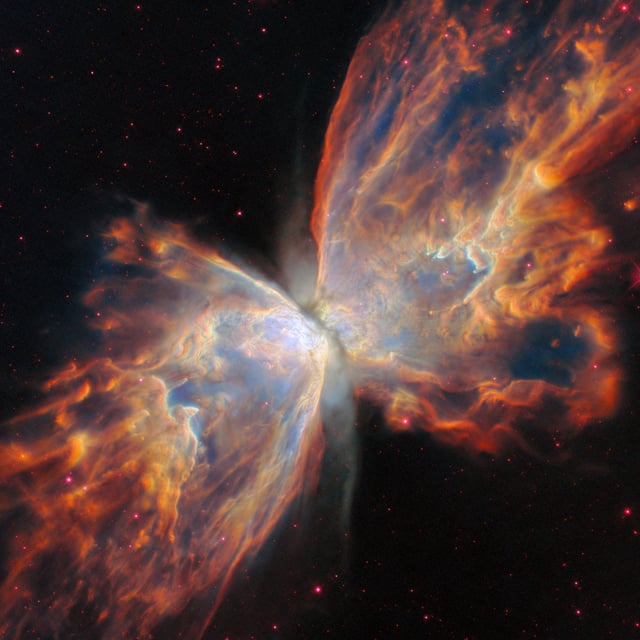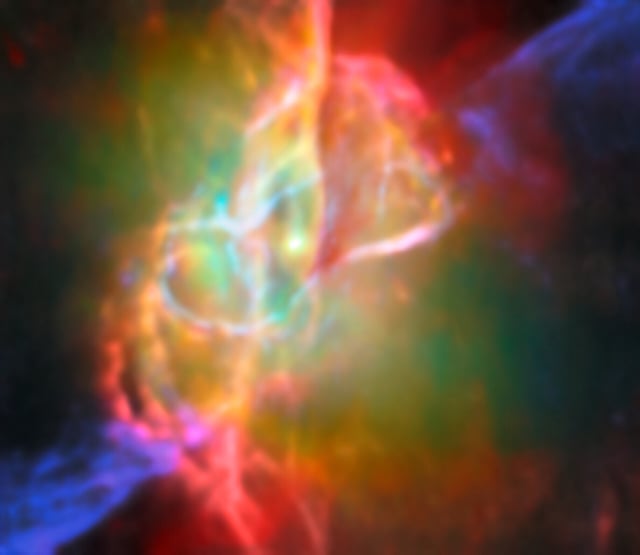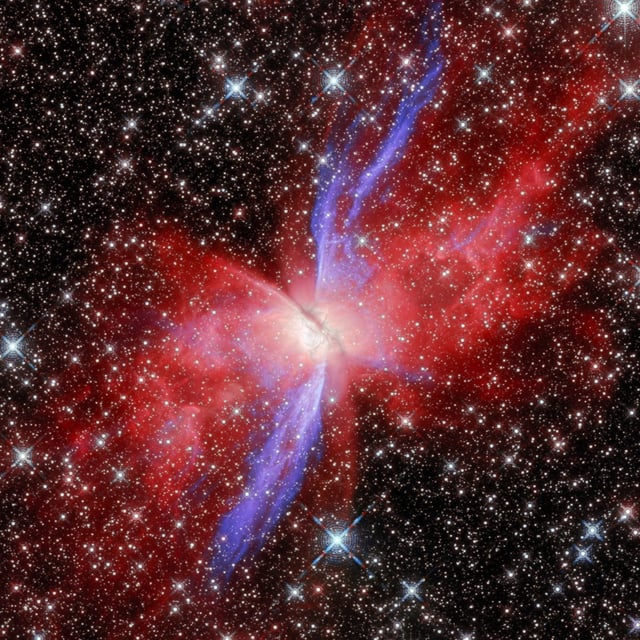Overview
- JWST’s MIRI integral-field observations, supplemented by ALMA, pierced the dusty torus to pinpoint the long-elusive central star in NGC 6302 about 3,400 light-years away.
- The central star measures roughly 220,000 Kelvin, ranking among the hottest known in a planetary nebula and heating a previously undetected warm dust cloud that shines in mid-infrared light.
- Spectroscopy cataloged nearly 200 emission lines that trace a layered, interconnected ionisation structure across the nebula’s core.
- The dense torus contains crystalline silicates including quartz alongside unusually large dust grains, indicating prolonged particle growth.
- Iron and nickel mark oppositely directed jets, and PAH emission appears at wind–gas interfaces in what researchers report may be the first evidence of PAH formation in an oxygen-rich planetary nebula.


